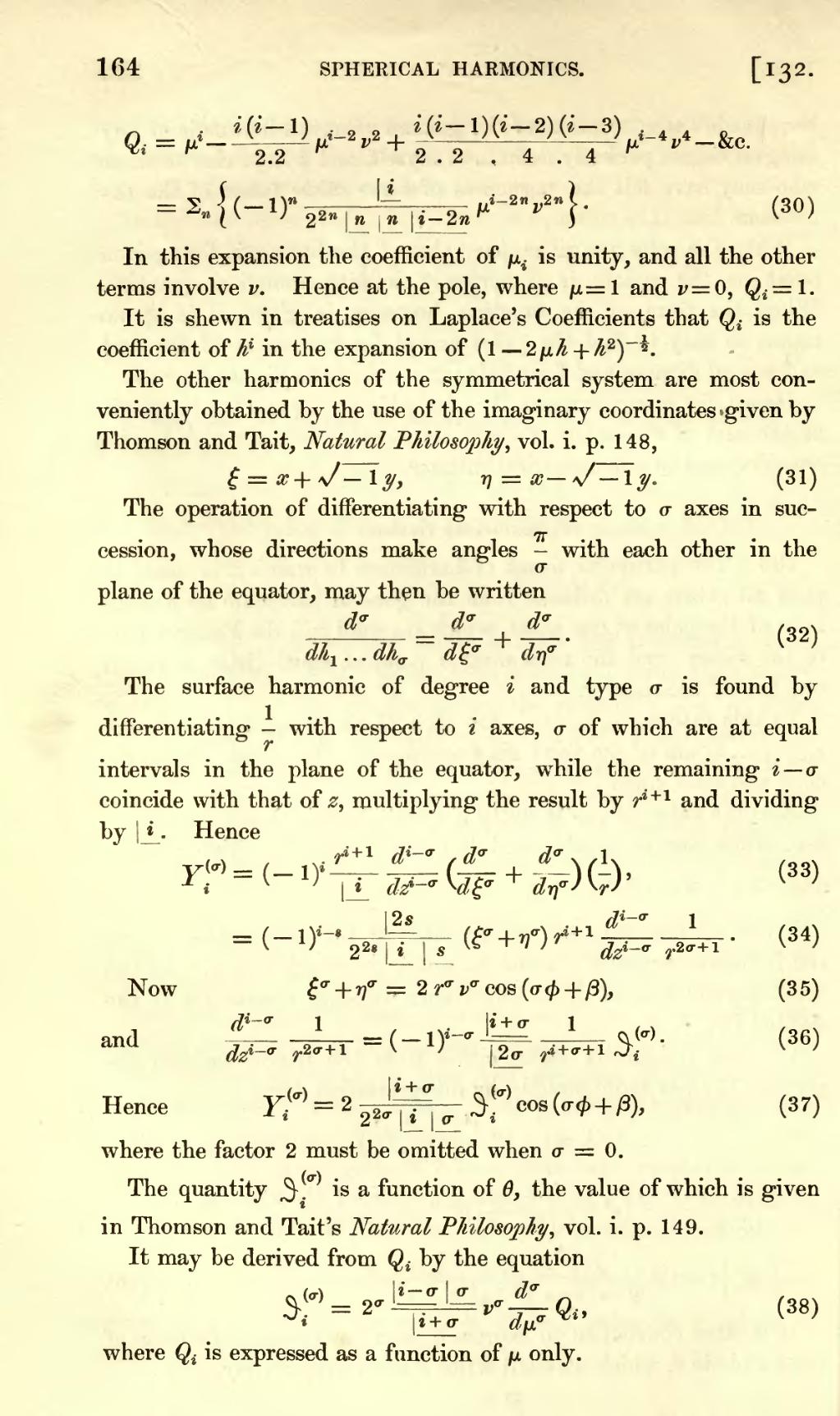
|
(30)
|
In this expansion the coefficient of  is unity, and all the other terms involve
is unity, and all the other terms involve  . Hence at the pole, where
. Hence at the pole, where  and
and  ,
,  .
.
It is shewn in treatises on Laplace’s Coefficients that  is the coefficient of
is the coefficient of  in the expansion of
in the expansion of  .
.
The other harmonics of the symmetrical system are most conveniently obtained by the use of the imaginary coordinates given by Thomson and Tait, Natural Philosophy, vol. i. p. 148,

|
(31)
|
The operation of differentiating with respect to a axes in succession, whose directions make angles  with each other in the plane of the equator, may then be written
with each other in the plane of the equator, may then be written

|
(32)
|
The surface harmonic of degree  and type
and type  is found by differentiating
is found by differentiating  with respect to
with respect to  axes,
axes,  of which are at equal intervals in the plane of the equator, while the remaining
of which are at equal intervals in the plane of the equator, while the remaining  coincide with that of
coincide with that of  , multiplying the result by
, multiplying the result by  and dividing by
and dividing by  . Hence
. Hence

|
(33)
|

|
(34)
|
Now

|
(35)
|
and

|
(36)
|
Hence

|
(37)
|
where the factor 2 must be omitted when  .
.
The quantity  is a function of
is a function of  , the value of which is given in Thomson and Tait’s Natural Philosophy, vol. i. p. 149.
, the value of which is given in Thomson and Tait’s Natural Philosophy, vol. i. p. 149.
It may be derived from  by the equation
by the equation

|
(38)
|
where  is expressed as a function of
is expressed as a function of  only.
only.





























